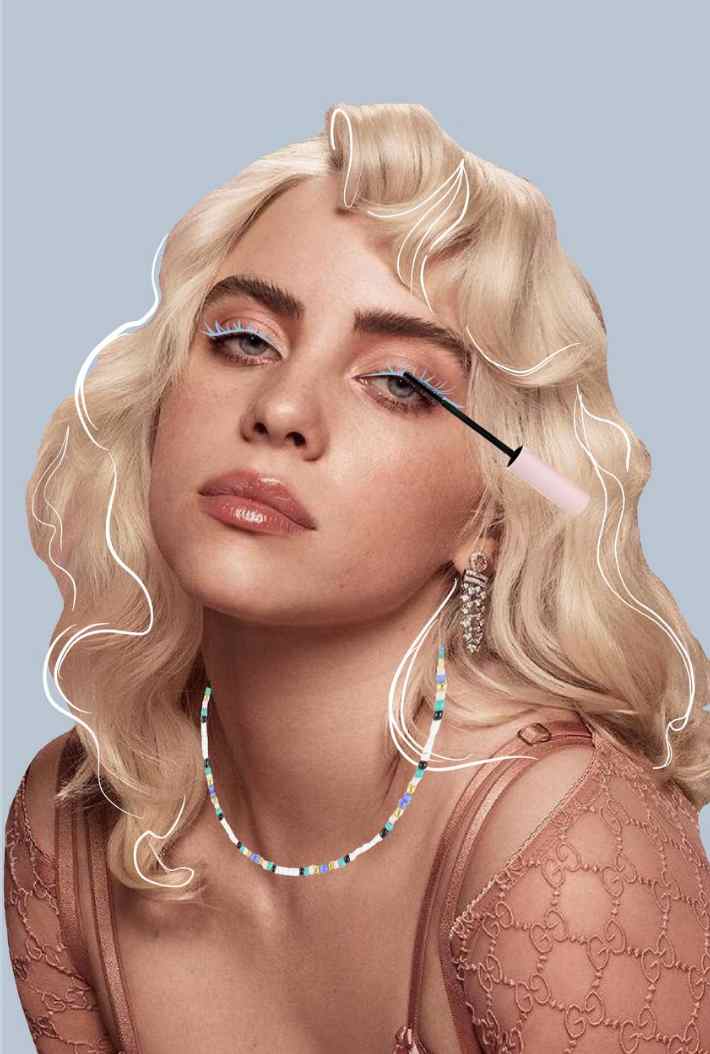
Making drawing and illustration their profession is the aspiration of many. However, not everyone succeeds in becoming a professional illustrator, and in making their passion a job that allows them to pay the bills. As time goes by, many stop, thinking they have no talent or stopping at the first difficulties. But talent is not necessarily an innate thing: creativity is in fact an exercise that must be cultivated every day.
Turning one's passion into a profession, in this case as an illustrator, presupposes a series of important steps to take. Today we will look at a roadmap with practical tips for becoming an illustrator.
What work can an illustrator do?
The illustrator may make detailed images for technical and scientific publishing, work for fantasy publishing, or design images for advertising. For his illustrations he applies traditional drawing techniques (pencils, pastels, tempera, acrylics, airbrush, pen stroke, mixed media, etc.).
Becoming an illustrator: roadmap
Starting out is the hardest thing
A solid foundation in any creative work is essential, even in becoming an illustrator. One must first:
- Get a lot of practice: you have to be an expert in your subject matter, so practice every day to know anatomy, color, composition thoroughly. Attending an illustration school to get a proper education might be helpful, but it is not necessarily necessary. There are also several online solutions, including Skillshare, which offers good illustration courses taught by successful professional illustrators.
- Digital or traditional illustration: this is not important; in fact, you need to experiment with different techniques. It is essential to "get your hands dirty," to make mistakes, to try again. A finished illustration is better than a perfect one. You have to give yourself goals, even not extreme ones, such as producing one finished illustration a week. The book How to Be an Illustrator is a good place to start.
- Know who has gone before us: illustration should be studied, both contemporary authors and the greats of the past. This is to learn about the styles, techniques and possibilities that this craft can offer. Fifty Years of Illustration is a must-have volume on your desk. Becoming an illustrator also means having an accurate picture of the state of the art of illustration in the recent past and contamporary.
Understand yourself before you are understood
Once you have built a solid technical foundation and are familiar with the work of different authors, a path begins that can be long and winding, but necessary. Those who want to become illustrators must ask themselves a fundamental first question: who am I? The answer is not simple at all, because initially one tends to copy the style of one's favorite authors.
You have to at some point find your own voice, certainly with influences from what you have studied, but unique enough to make what you produce personal, to be recognizable and create a strong personality through your illustrations.
In time you will figure out what you are good at, creating what you love: children's illustration? Sci-fi themed? Or spanning different genres but maintaining a consistent style? This is about getting identified and making yourself useful to the marketing goals of a specific magazine or media agency. The goal is not to look at one's illustration and feel satisfied, but to understand the needs of potential clients (newspapers, magazines, agencies, events) and to produce work that works, that tells a clear and exciting story when paired with text. Becoming a professional illustrator requires understanding where one's skills and abilities can be put to practical use.
Building personal brand
Many illustrators work as freelancers: this means looking for clients to work with, but also, and more importantly, communicating your work as well as possible in order to be found. It is not enough simply to be good, but also to try to have a clear vision to get noticed, online and offline, by potential clients.
There is much more within so-called personal branding beyond a client list or one's portfolio, those come later. Instead, it's about everything an illustrator does, what they write, their interests, their personality.
Promoting your work offline
Once you have gained experience in the field, chosen the best illustrations to show and the type of clients to work with, you need to move on to the acquisition phase. It means letting potential clients know that you are ready to take responsibility for certain work as an illustrator. If you really want to make money from this craft then you have to see yourself as a business. It means actively seeking commissions, connections with clients, in short calling yourself by one word: illustrator, no longer wannabe.
Promoting your work online
Becoming an illustrator is also about image. Today the Internet plays a key role in promoting one's work. It is important to create one's digital presence day after day; it is essential to see one's work "flourish." The advice is to create an online portfolio of one's work, even with a blog to tell one's journey and experience, to be findable on Google as well.
Continuous education
Fulfilling your dream of becoming an illustrator is something great. Congratulations! But if you have become an illustrator, you will have realized one thing: it is not a stable goal that you achieve, rather it is a constant journey – as tiring as it is exciting!
For example, online procreate illustration course by FantasyRoom is perfect for anyone who wants to learn how to create images for commercial use. It includes several video tutorials for creating digital illustrations on your iPad.

Commercial illustration example: Billie Eilish
What commercial illustrations are for
If we go by dictionary definitions, an illustration is an image that illustrates a text. Some go so far as to say that to illustrate it, by etymology, also means to make it shine. Others, more prosaically, know that illustration has been an old companion of texts, silent, dreamy, sometimes didactic, sometimes decorative, since the thousand years that separate us from the first books, but come to think of it, it is from the remote age of the Egyptian pharaohs that human beings have accompanied written texts with images.
Illustrations satisfy not only a need to explain better and say more, but they lend an aid to the imagination, helping to create peoples' imaginaries, to shape oral tales.
Illustration always represents something universal or hypothetical, exploiting the imagination. Even when it becomes realistic, its representational nature remains intact, never blending with reality as it does with photography.
Without dwelling too much on technical explanations, this article will address how it is used: what it is used for, where it is used, what results it achieves, demonstrating how there are many benefits of using illustrations for visual communication in general, including publishing.
It fits the context
Illustrations, especially those created digitally, can easily adapt to the graphic context in which they are placed. The background and other elements can echo graphics or colors of the project that houses them.
It captures attention
This is the obvious one. For as long as the Web has existed, it has been possible to measure how much more attention-grabbing texts accompanied by images capture the audience's attention: the percentage of interest goes up by 15-20% between text only written and text with images.
It has attractive costs
It is difficult to generalize on this aspect, but it can be said that a good illustration costs less than a good photograph, mainly due to the fact that it is tailored to the client.
It guarantees originality
Again, it is difficult to generalize, because there are many illustrators who repeat tired clichés or copy more famous colleagues, but illustrations, especially when they are as mentioned earlier, that is, constructed in a way that actively engages the viewer, are remembered more. And they stick in the memory. It is clear that merely decorative illustrations, however well done, tend not to stick, even if they are very striking at first glance. It is as if they were a beautiful wallpaper….
It enhances understanding
In fact, any image, if well designed and used, improves comprehension of the texts it accompanies, but illustration has the ability to easily use metaphors, paradoxes, and symbolism that increase the degree of comprehension, creating an active involvement in the viewer who is forced to reason to understand the connection between image and text.
In addition, illustration is one of the most suitable tools for representing concepts and emotions, accompanying stories, and freeing the imagination. Whenever, on the other hand, it becomes too didactic or realistic, it runs the risk of losing strength, unless there is great skill on the part of its author. Translated with www.DeepL.com/Translator (free version)

Commercial illustration with Procreate: F.A.Q.
What is Procreate for?
Winner of the Apple Design Award and Apple Store Essential title, Procreate is a wonderful app for those who love to draw, illustrate, paint, or just sketch. From tools to colors, effects to sharing systems, every feature offers a very high level of quality.
What can you do with Procreate?
Procreate is undoubtedly a great application for those who like to draw or paint on the iPad. With more than 25 definition options for each brush, more than 50 shapes in the library, 16 layers, support for PSD, PNG and JPEG, it is definitely an app to have fun with and work with.
What does commercial artist mean?
It is a high-level professional who produces and executes narratives and messages, digital or print, to promote or market products, goods and services and to explain, tell, inform using creativity backed by artistic skills.
Commercial artists: who are they and what do they do?
Saying commercial artists also sounds very bad thanks to a certain difficulty in matching "artistic spirit" with "money" in the same sentence.

Written by Michael Zippo
Michael Zippo, passionate Webmaster and Publisher, stands out for his versatility in online dissemination. Through his blog, he explores topics ranging from celebrity net worth to business dynamics, the economy, and developments in IT and programming. His professional presence on LinkedIn - https://www.linkedin.com/in/michael-zippo-9136441b1/ - is a reflection of his dedication to the industry, while managing platforms such as EmergeSocial.NET and theworldtimes.org highlights his expertise in creating informative and timely content. Involved in significant projects such as python.engineering, Michael offers a unique experience in the digital world, inviting the public to explore the many facets online with him.
